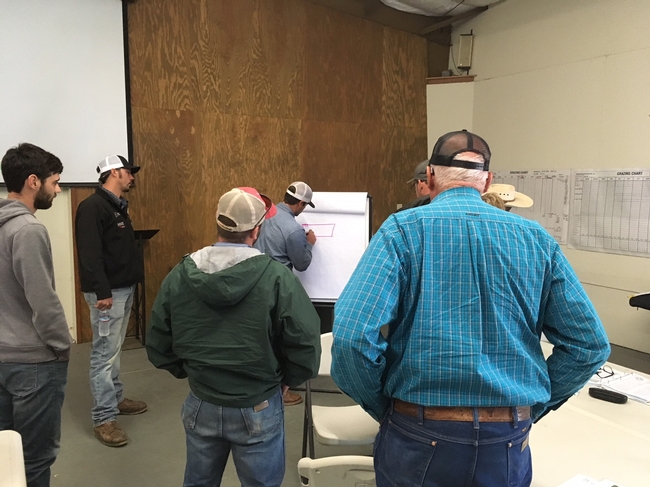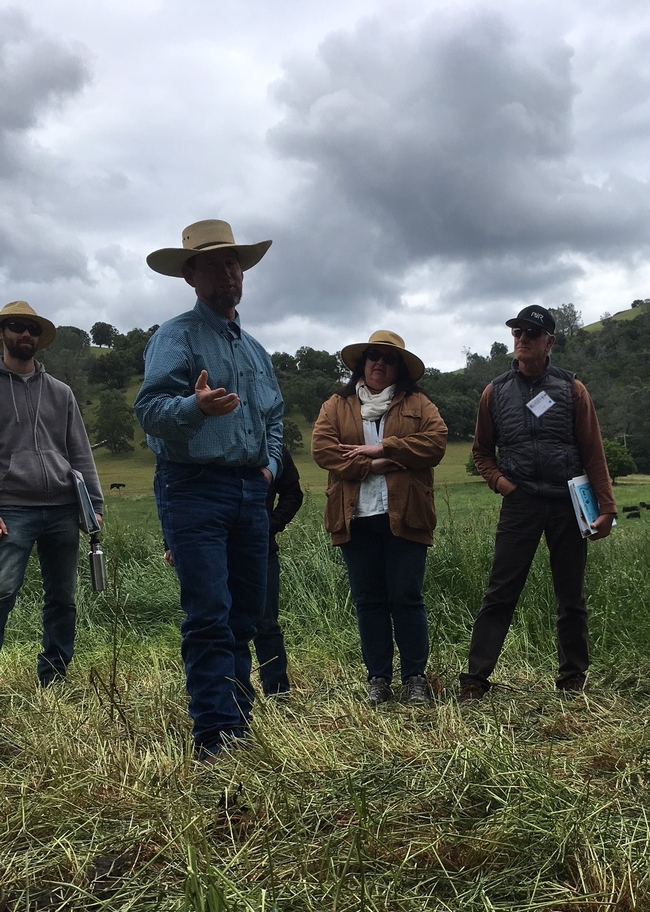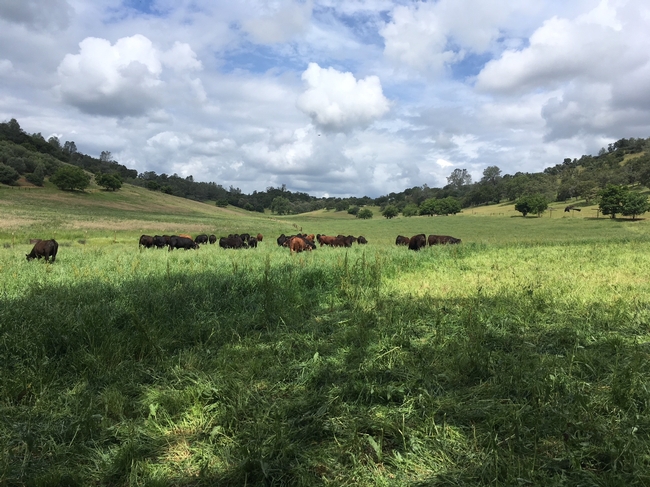Last week, I held my first California Cattle Grazing School at the UC Sierra Foothill Research and Extension Center in Browns Valley. The two-day school, an adaptation of Roger Ingram's long-running California Grazing Academy, included classroom talks and field-based learning activities. And as I had hoped, it also featured a great deal of rancher-to-rancher learning. Sometimes, I think, many of us learn as much from these informal conversations as we do from prepared lectures - I know I do!
One of the class participants, Clay Daulton, is a long-time Madera County rancher. I've known Clay since I was just starting my professional career more than 25 years ago. Clay recently became a California Naturalist, doing his capstone project for the program on the varieties of grass and forb species on his foothill rangeland. Clay told us, "I spent half of my life paying attention to cattle - I could pick out a sick calf in a pasture from 100 yards away. But I should have been paying attention to my grass." Clay showed us how he calculates the carrying capacity of his ranch each fall based on the weight of the steers he's contracted to graze and on the amount of carryover forage available from the previous spring.
Earlier in the day, after I gave a formal talk about fencing systems and stockwater development, Paidin Gillis, who ranches in Lincoln, shared his technique for keeping water troughs from freezing in colder climates. He sketched out the system on a flip chart while the rest of the class looked on. Clifton Dorrance, from the Hollister area, shared his technique for burying concrete water troughs to keep cattle from undermining the trough - and he told us that this technique also makes water more accessible to wildlife.
During the first day, a group of local ranchers (known humorously as the "Foothill Grazing Geeks") joined us to talk about how they use the managed grazing principles we cover in the school. Connie Scheiber, from Lincoln, talked about switching their operation from fall calving to spring calving to match forage demand with the period of rapid growth. Joe Fischer, Brad Fowler and Rob Thompson talked about the value of forage diversity in their irrigated pastures. As teachers, Roger and I sat back and listened!
In one of my favorite essays ("Let the Farm Judge", which can be found in Bringing it to the Table: On Farming and Food), Wendell Berry writes,
"What does it mean that an island not much bigger than Kansas [England] ... should have developed sixty or so breeds of sheep? It means that thousands of farmers were paying the most discriminating attention, not only to their sheep, but to the nature of their local landscapes and economies, for a long time."
I was reminded of Berry's emphasis on the knowledge of farmers (and ranchers) this weekend. While much of our work in cooperative extension focuses on research and teaching, I think we serve our communities most effectively when we create space for people to learn from one another, as well.
If you missed this year's California Cattle Grazing School, consider registering for our California Sheep and Goat Grazing School in September - stay tuned for details!
